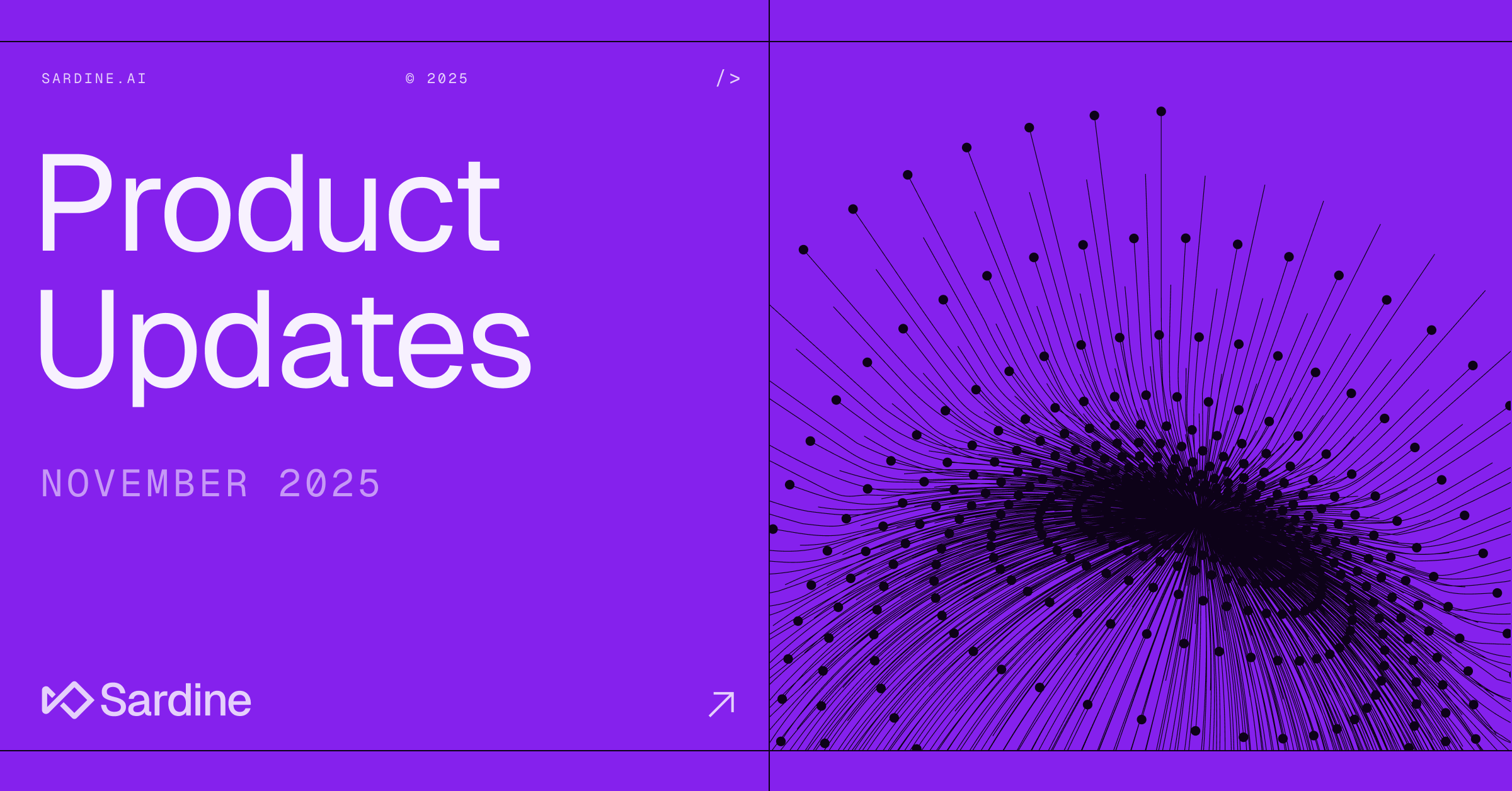There are on-ramps, and then there’s Sardine
You wouldn’t use a car that only worked 50% of the time, so why do we accept that level of performance from some payment and “on-ramp” providers?
For merchants, performance is everything when it comes to moving value or making a payment.
Moving money is easy. Doing it with high conversion is hard.
But it doesn’t have to be that way. Sardine’s on-ramp offers the highest conversion rate regardless of payment type. We average 96% of all payment attempts authorized by a first-time customer on ACH. Returning customers then see 99.06% authorization rates. On cards we average 85%, much higher than the industry average.

Performance matters.
Why is on-ramp performance hard?
Accepting payments is easy, but making that slick and “just work” is extremely hard.
Under the hood, the payments infrastructure is a layer cake of providers. For a wallet or merchant, what looks like an “on-ramp” is often a layer over another payments company and a provider of Crypto services.
That’s not a bad thing because integrating Crypto and payments is hard. The problem lies in the performance.
Customers’ highest friction points are:
- Difficult onboarding with high rejection rates (the KYC screens where they submit proof of identity). Wallets and providers often use a 3rd party KYC service, not designed to sit inside a wallet. These services are generic and not tuned to Crypto onboarding. They may reject good users and let bad users in (AKA account opening fraud).
- The transaction is declined. Often a transaction gets rejected by the underlying payments processor or bank. They see “Crypto” in the transaction information and fire their internal fraud rules and processes. This, too, is not tuned to Crypto transaction types because it’s generic — it rejects good transactions and allows bad transactions.
- Limited choice of payment types. Accepting “cards” isn’t as simple as it sounds. “On-ramp providers often reject premium” cards because they are more expensive to process. In the US, premium cards (like Amex or Chase Sapphire) are ~28% of the market. As you get into Europe, there are multiple local payment types all with their own providers and fraud rules. Unless you’re going deep into these nuances, conversion is hard to improve.
Most on-ramps aren’t fraud specialists; neither are their payment infrastructure partners.
Fraud prevention is something they add on as hygiene and the cost of doing business.
It’s a counter-intuitive but true fact that if you want the best payment performance, you will make the most meaningful gains by focusing on fraud at account opening and during the transaction.
Jim at Blockchain.com described this brilliantly (full blog here)
“If you change how your payments stack works, you can improve revenues by basis points. Changing your fraud performance can improve your revenues by percentage points. It is a much more efficient use of time.”
— Jim Wang, Head of Payment Product, Blockchain.com
--
How to get the best performance
Getting high conversion rates requires an on-ramp that can:
- Have the best data and ML about where fraud occurs at account opening. Account opening fraud cannot be detected just by capturing a drivers license, address and national ID (like social security number). Those details can be stolen, or a user could be scammed into providing them. You need to be able to see the device and the millions of hidden signals that show account opening could be fraud. That prevents fraud and lets more good users in, increasing conversion.
- Have the best ML and data about where fraud occurs at account funding (or payment). Many good payment companies look at a funding transaction to spot if a transaction looks fraudulent, but most don’t combine this with on-chain data to see if the wallet itself has any negative history, or with the device to see if it shows any signal of being fraudulent. Having the whole picture creates far more accuracy and far higher performance. Catching more bad guys and giving good customers more conversion.
- Understand the 3rd parties involved and their limitations. Working with banks and payment processors and demonstrating competence in fraud detection at account opening and funding can improve conversion. If their infrastructure isn’t specialized, but you can demonstrate yours is, then everybody wins.
- Offer the widest possible payment options. Under the hood, payment types are not as simple as they sound. Providers can increase conversion by getting closer to the metal and nuances.
- Constantly tweak the fraud and approvals flow for better conversion. Fraud doesn’t stand still, and neither does customer behavior. The highest performance requires a level of obsession with precision and reacting to the changes in the market. Like a high-performance athlete, being good once isn’t good enough.
Do you want the world’s best-performing on-ramp?
Sardine has the most data about where fraud happens at account opening and funding. This gives us the most accurate and sophisticated understanding of good versus bad users.
We work with partners, share our knowledge, and constantly tweak our product for the highest conversion and the lowest fraud rates.
We’re not an on-ramp; we’re a safer, faster, higher-performing way to pay.
If that sounds interesting, contact us



%20(1).png)







